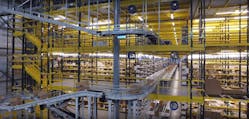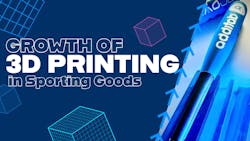Since joining Machine Design as a technical editor this past June, I’ve had the privilege of speaking with a host of subject matter experts about a range of topics such as automated factories, robotics and additive manufacturing. In the spirit of the holiday season and as we say goodbye to 2023, I’d like to share my Top Five Favorites (in no particular order):
★ In September, I visited Fabco-Air, a Festo company, located in Gainesville, Fla., where I witnessed first-hand how the machinists set up the jobs that run without supervision, lights-out, overnight. In addition to learning about the way Fabco-Air runs its business, I got to meet some great people that day. And while meeting Fabco-Air employees from every department, it was clear that many of them had been employed there for years—and in several cases, for decades. That visit led to creating one of my favorite pieces of content to date: Nurturing Innovation Can Lead to Employee Longevity.
★ Also on the topic of lights-out manufacturing, I spoke with Guy Courtin for a supply chain perspective about the concept of dark factories. Factories and warehouses are evolving, and with that Courtin notes we are seeing less dependency on labor. “We need more physical robotic automation in there to do the dangerous jobs, to do the boring jobs, to do the repetitive jobs,” he said. Machines and robotics will supplement that.
We discussed the drivers for a future with fully automated factories as well as the chasm between science fiction and reality. There are many jobs that humans are still better equipped to do, he said, “and that we still—as humans ourselves—recognize that humans are better equipped to do those jobs.” Check it out: Dark Factories: Science Fiction or Reality?
★ I am a sports fan from way back. Professional sports such as the NFL and MLB can be entertaining, but there is nothing more gratifying than watching kids play youth sports simply because it is fun. My husband and I raised two sons, both of whom played several sports, but my favorite to watch was baseball (t-ball through pony).
When I spoke with Glen Mason, manager of advanced innovation and industrialization at DeMarini, a division of Wilson Sporting Goods, and Lasse Staal, business development director of Nexa3D, about additive manufacturing for the sporting goods space, I was a bit envious of the kids who will get to play with bats that are being produced today. “I get to make bats better,” Mason said. Check out this video series, which covers 3D printing growth in sporting goods, failing fast and failing better, dissolving molds, sustainability and building a community of injection-molding users. This interview will go down as a home run in my book.
★ 3D printing is not limited to passive or static objects, though. Multi-material additive manufacturing is at the forefront of innovation, with markets such as wearables, sensors, batteries and solar cells benefiting from the technology. 3D printing can result in electronics with dynamic or active properties, including conductivity and magnetism. This opens possibilities for manufacturing applications in smart textiles, biomedical devices and automotive, among others.
In a Q&A with Ramsey Stevens, CEO of nano3Dprint, he shared his insights on multi-material 3D printing, including its challenges, applications and how he sees it contributing to a range of markets. Technology has come such a long way in such a short time, and I am here for it.
★ Additive manufacturing has kept me curious and eager to learn more about the many facets of it. I was able to learn how Oertli, a medical device maker, enhanced its packaging 3D printing workflow with a benchtop multiplier pressure former from Mayku. Oertli Instruments sees its mission in the development and production of surgical platforms, instruments and consumables for ophthalmology surgery, according to Malte Heuer, a project lead in vitrectomy surgery at Oertli. He says the company has always committed itself to consistently high quality and absolute reliability.
When its FDM process alone was inefficient for creating prototypes, though, Oertli 3D printed positive molds to serve as a thermoforming template for the Mayku Multiplier. The company was able to easily integrate the Multiplier into the existing prototyping workflow, preserving key aspects that were already efficient and optimizing those that caused issues. Check out the full story: Medical Device Maker Enhances its Packaging 3D Printing Workflow with a Benchtop Multiplier Pressure Former.



